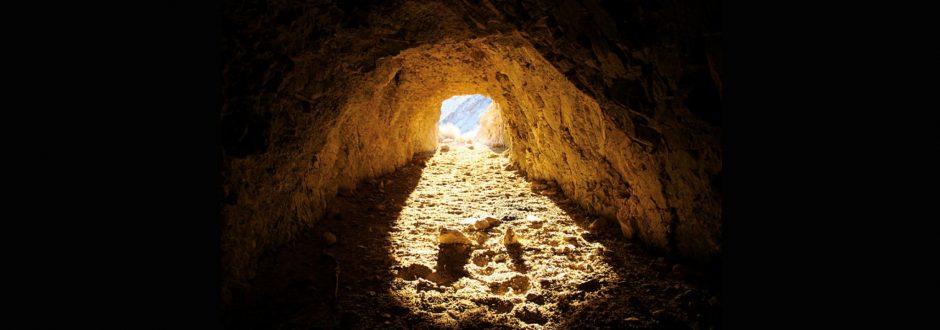Good Samaritan Oblate Peita Ward facilitated a Spirituality Gathering with the title Doing together what we cannot do alone. The session ‘Practising Resurrection’ was the basis for a fruitful discussion.
At an Oblate gathering at Lourdes Hill College, Hawthorne, in 2018, Congregational Leader Sister Patty Fawkner reminded us that we were carriers, not consumers, of the Benedictine Spirituality.
This year at our online Spirituality Gathering on June 4, we were inspired by the session ‘Empathy in Action’. This was led by Joanna Mead, Archivist for the Good Samaritan Congregation, who took us back in time to colonial Sydney.
As we imagined ourselves on the streets amongst the men, women and children of those desperate times, we came to better appreciate the founding story of the Sisters of the Good Samaritan.
To raise destitute women up from the poverty and squalor of their daily existence so they would come to know the compassion and dignity offered by women of faith highlighted perfectly the theme for the day. Learning about Mrs Mary Blake and the Morley sisters, Ann and Mary Ann – truly women of action – proved informative, inspirational and challenging.
As carriers, as bringers of hope, we must build upon that sense of hope by turning our attention to thoughts of nurturing, leading to flourishing.
The two great feasts of the Church, Easter and Pentecost, are rich, fertile ground for nurturing our faith and our commitment as Oblates. Our aim though is to flourish, and for this we can draw upon both stories. However, it is the story of the resurrection that calls us most ardently to listen with the ear of the heart to God’s plan for us.
In 1973, the American farmer, poet and prophet, Wendell Berry, wrote a poem titled, Manifesto: The Mad Farmer’s Liberation Front. The poem concludes with two powerful words, an invitation we cannot ignore: Practise resurrection.
And so we were asked to consider two questions:
What would practising resurrection require of me?
What would it mean for us as Oblates … as a local group; as part of Good Samaritans All?
The resurrection story is one which draws us back in time 2000 years, where we find ourselves at the tomb where the crucified Jesus was laid. The image of the tomb can be powerful and evocative, positive but also negative, challenging and yet comforting.
As we stand at the entrance, beside the stone that has been rolled away, what do we see? What do we feel? And I find myself asking: Do I have it within me to take up the challenge of practising resurrection and witnessing to others? And how do I do this?
The tomb is still opening each day, when situations ask of us to do what we can, with what we have, and in the place where we are … We have the opportunity to bring resurrection joy and hope into the lives of others by the way we live our lives.
When a person is living a resurrection life, what does that look like?
When people look at me, do they see joy or an empty tomb?
When I look inside the tomb, do I see a new reality? A new beginning? A letting go of old fears and old ways and embracing new possibilities? Am I open to being surprised by the Spirit?
And because I am a curious creature, I cannot help but take those tentative steps inside the tomb. Walking through the opening into the darkness within, what do I see? What do I feel?
I took myself into the tomb. In there, I could examine my own thoughts, hurts, views. I need to let them go. I need to come up with new ideas and new eyes in order to view situations differently.
But the darkness and emptiness of the tomb can be overwhelming.
Sometimes I feel like I am in a tomb of my own making.
I ask myself: What is dead in me that needs resurrecting?
When I feel entombed, who rolls away the stone for me?
But picking up the linen wrappings in which Jesus had been buried, I realise I am not alone. God is with me, even when things don’t make sense. God does not abandon us. But we must trust in God. After all, who rolled the stone away?
In conclusion, the call to practise resurrection requires of us to move!
The women in the story moved! Towards the tomb; within the tomb; away from the tomb; they headed back – even ran – to tell the others.
We are no longer locked in; safe (or trapped) within boundaries. We can drive. We can fly. We can Zoom.
Jesus broke through the boundaries of death. Aren’t we then called to do likewise? What causes our spirit to die? When all hope is gone, do we simply give up? What binds us to the empty tomb and prevents us from running ‘to tell the others’?
As Benedict urges us to do, we must run … with our hearts overflowing with the inexpressible delight of love.
If we see ourselves as resurrection people, as witnesses to the opened tomb and the risen Christ, and as Good Samaritan Oblates, then we are called to be active, not passive; to be carriers and not just consumers of Benedictine Spirituality; to be bringers of hope and not harbingers of doom and despair.
Doing together what we cannot do alone was the theme of our online Spirituality Gathering. It is in practising resurrection together to bring the light of Christ to others that will provide us with a way forward, and a new way of being in the world.
Peita Ward thanks fellow Oblate Marie Milne for the inspiration for the session ‘Practising Resurrection’ as well as the contributions made by many attendees at the online Spirituality Gathering.
